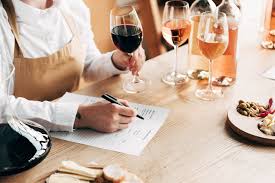Wine blending is an art form, a science, and a tradition that dates back centuries, yet it remains shrouded in mystery for many wine enthusiasts. It’s a process where different grape varietals are combined to create a wine greater than the sum of its parts, embodying complexity, balance, and a harmonious flavor profile. This blog post takes you behind the scenes with master vintners to explore the intricate art of wine blending, revealing the secrets and techniques that contribute to crafting world-class wines.
The philosophy of blending
At its core, wine blending is about achieving a desired style or character that cannot be obtained from a single grape varietal. Master vintners approach blending with a clear vision, whether aiming for the robust complexity of a bordeaux blend or the delicate balance of a rhône blend. The philosophy behind blending is to enhance the strengths and mitigate the weaknesses of each varietal, creating a wine that is balanced, complex, and expressive of its terroir.
The process: a blend of art and science
The blending process begins long before the harvest, with vintners carefully selecting grape varieties and vineyard sites that will contribute the desired characteristics to the final blend. After fermentation, the real magic begins. Vintners taste wines from different barrels, assessing their aroma, flavor, body, and tannin structure. This sensory evaluation is as much an art as it is a science, requiring years of experience and a deep understanding of how different varietals interact.
Statistical insight: according to the international organisation of vine and wine (oiv), the global vineyard area devoted to the principal grape varieties has remained relatively stable over the past decade, highlighting the importance of blending in creating diversity and complexity in wine production.
The role of technology in modern blending
While the art of blending is steeped in tradition, modern vintners also leverage technology to refine their craft. Advanced analytical tools allow for precise measurements of acidity, sugar content, and phenolic compounds, providing a scientific basis for blending decisions. Computer modeling can even simulate the outcomes of different blending scenarios, helping vintners predict how a wine will evolve over time.
Challenges and rewards
Wine blending poses unique challenges, from predicting how a blend will age to ensuring consistency across vintages. The variability of grape characteristics from year to year requires vintners to adapt their blends, striving to maintain the signature style of the wine while embracing the uniqueness of each vintage. The reward, however, is in the creation of a wine that captures the essence of its components, offering a complex and layered drinking experience that tells a story of its origin and the skill of its creator.
The future of blending
As consumer preferences evolve and new grape varieties emerge, the art of wine blending continues to evolve. Master vintners are experimenting with unconventional blends, pushing the boundaries of tradition to create innovative wines that challenge and delight the palate. Sustainability also plays a growing role in blending decisions, with vintners increasingly focusing on grape varieties that are adapted to local climate conditions, reducing the need for irrigation and chemical inputs.
Conclusion
The art of wine blending is a testament to the creativity, skill, and vision of master vintners. Behind every blended wine is a story of collaboration between nature and craftsmanship, tradition and innovation. As we peel back the layers of this intricate process, we gain a deeper appreciation for the complexity and beauty of blended wines, each sip a celebration of the masterful artistry that brought it to life.

